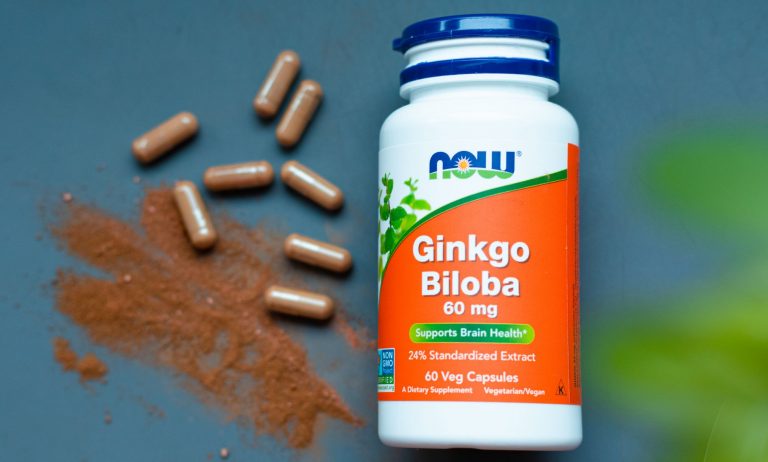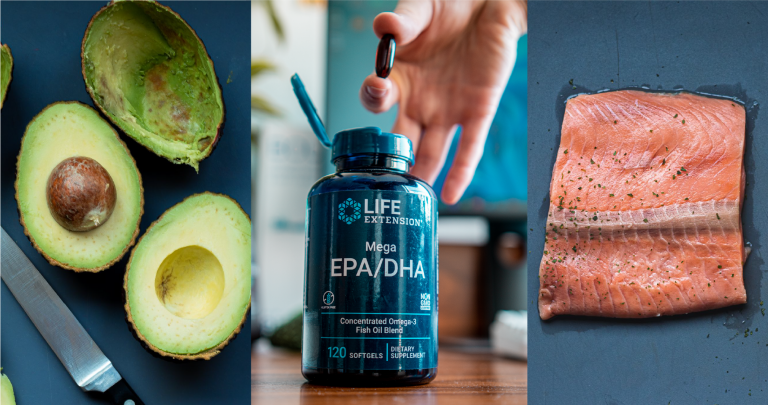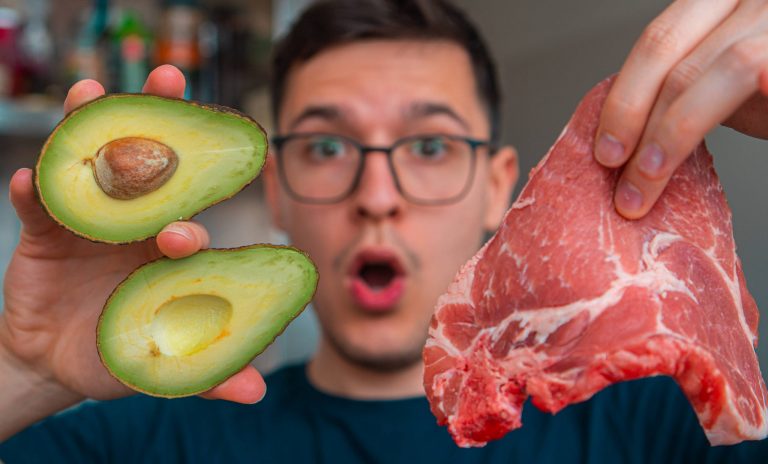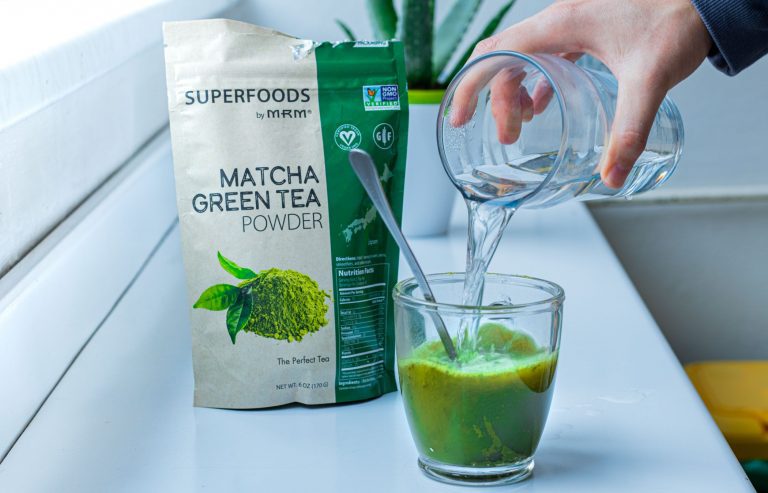8 Benefits of Grass-Fed Beef: Nutrients, CLA, Omega 3, B Vitamins, & Protein
What are the benefits of grass-fed beef? You’d be surprised how nutrient-packed beef can be. CLA, B vitamins, Creatine, Iron, Omega 3’s- and loads of Protein. We will discover grass-fed vs. grain-fed beef differences and the potential health benefits of grass-fed beef. Also, it’s time to bust some myths. Enjoy!
Grass-Fed Beef vs Grain-Fed Beef
Grass-fed beef comes from animals that eat grass and edible plants and roam free. If the animals are later on transferred to large feedlots and are fed with grain feeds from corn, that’s grain-fed beef.
The idea behind picking grass-fed in front of grain-fed beef is the nutritional difference. First of all, it’s lower in calories. Per 100 grams of grass-fed beef, we get 198 kcal, while grain-fed offers 247, so 50 kcal + per the same weight. (1)
In terms of nutrients, studies show that grass-fed finished beef has higher neutral stearic FA cholesterol and less saturated fats like mystic and palmitic which elevate cholesterol. Also, grass fad has more precursors for potent anti-inflammatory fat-soluble vitamins like A and E, as well as glutathione and superoxide dismutase in comparison to grain-fed. (2)
8 Benefits of Grass-Fed Beef
The science behind some components of red meat, like CLA is quite controversial and definitely not as simple, black and white as we might expect. The bottom line is that besides providing some essential saturated fat which beef is demonized for, it contains many vitamins, minerals, and other important nutrients for cognition, muscle growth, heart function, fighting inflammation, and energy production.
1. CLA on Fat-Loss, Weight loss
CLA is a conjugated linoleic acid, a fatty compound present in meat and dairy products. It is an omega-6 fatty acid that can be classified into either cis-fats or trans-fats, but it’s naturally occurring in animals.
CLA is one of the most studied supplements for its potential benefits on weight loss, metabolic function, sugar control, and lean muscle mass. When it comes to weight loss, an important factor is improving glucose control, to prevent metabolic syndrome diseases associated with obesity or diabetes.
- Grass-fed cows produce milk that’s 500% richer in CLA, in comparison to cows treated with more grains or supplements. (3)
- CLA is known to reduce body fat, improve the glycemic profile and blood sugar control. CLA supplementation may also improve the re-synthesis of glycogen, have a profound effect on immunity, and reduce atherosclerosis. (4)
- Some studies show that CLA may actually reduce insulin sensitivity and increase fasting glucose when taken as a supplement, which is different than eating CLA in meat. However, it did increase the good cholesterol HDL by 8%. (5) In a simliar study, CLA didn’t affect insulin sensitivity or glucose metabolism in overweight or obese people. (6)
- In obese children, those who received CLA seemed to significantly improve insulin resistance and exceeded lifestyle program benefits. (7)
Extra research: CLA on fat, appetite, and obesity
- CLA in vivo and in vitro (isomers 10,12 CLA) reduces adiposity in animal models. Potential mechanisms include increasing energy expenditure, suppressing appetite, decreasing lipogenesis, ad increasing lipolysis. (8)
- CLA reduces body fat in overweight or obese people. While there were no differences in BMI, blood lipids, and lean body mass, the CLA group reduced body fat mass up to 3.4 g CLA a day. (9)
- In 63 overweight or grade 1 obese Chinese subjects, 12-week CLA supplementation lowered obesity incidence without negative side effects. (10)
summary
So far, it seems that grass-fed cows produce more CLA which may have positive effects on fat loss, insulin sensitivity, and HDL levels in some people, but not all people. Mechanisms behind it include appetite suppression, increased lipolysis and reduced lipogenesis, and increased energy expenditure. The CLA from supplementation may differ from the natural ones found in meat.
2. Keto, LCHF on Insulin Sensitivity
Grass-fed beef is a suitable food for a Keto or Low-carb high-fat diet. It is a high-protein, low-sugar, and high-fat food. The idea behind ketogenic or LCHF diets is their potential to improve insulin sensitivity. How? By limiting sugar we prevent sugar and insulin spikes.
A Keto diet can be efficient in reducing LDL, triglycerides, hemoglobin A1c, total cholesterol, and lower glucose fasting levels. (11)
A cohort study also shows the potential of the LCHF diet to reduce HbA1c in people with type 2 diabetes. Lowering HbA1c can slow the progression of diabetes and metabolic syndrome diseases. Also, LCHF had weight loss and an antihyperglycemic effect. (12)
Reduced sugar variability may have a positive effect and improve glucose utilization later. Also, glucose roller-coaster-like behavior (spikes, falls) causes high inflammation and drives metabolic syndrome in the body.
While beef on its own won’t be magical for insulin improvements, it is a low-sugar food with high protein and tons of nutrients, which are important for keeping lean muscle mass.
summary
Grass-Fed Beef is a low-sugar, high-fat, and high-protein food suitable for diets like Keto or LCHF, which are known to be effective in improving insulin sensitivity, and reducing glucose spikes, and variability.
3. Nutrient & Electrolyte Powerhouse
Grass-fed beef is one of the most nutrient-dense foods out there. When thinking of superfoods, it’s inevitable you’ll come across many herbs and algae like spirulina or chlorella that are packed with nutrients.
But many times, fatty foods like avocado, olive oil, and even grass-fed beef are loaded with fat-soluble vitamins you don’t get anywhere else. We are talking vitamin D, precursors for vitamin E and A.
Grass-fed beef is so micronutrient-rich, that per 100 grams you’d get: (13)
| Vitamin B6 | 0.355 mg 27% DV |
| Vitamin B12 | 2.0 mcg 33% DV |
| Niacin B3 | 4,8 24% DV |
| Iron | 11% DV |
| Phosphorus | 175 mg 25% DV |
| Selenium | 14,20 mcg 26 % DV |
| Zinc | 4.55 mg 41% DV |
Also, beef is loaded with tons of protein, providing 19.4 (almost 20) grams of high-quality amino acids per only 100 grams.
Beef is loaded with electrolytes too. These are important for the regulation of muscle and nervous system function, hydration, acid balance, and contractions. Electrolytes are lost with vigorous-intensity exercise through sweat.
While chugging a post-workout electrolyte soda, can sufficiently replenish these electrolytes, if you’re on LCHF, think of adding some grass-fed beef steak.
Nutrition: Per 100 grams of beef, there is 19.0 mg of Magnesium, 68.0 mg of sodium, and 289 mg of Potassium.
summary
Grass-fed beef is a nutrient powerhouse. It’s pretty rich in many vitamins and minerals like B vitamins, Iron, Phosphorus, Zinc, and electrolytes like Magnesium, Sodium, and Potassium.

3. Zinc & Protein on Muscle Growth & Development
Grass-fed beef is one of the richest food sources of Zinc and high-quality amino acids. These are important for muscle growth and regeneration, but overall development too.
Protein is important to sustain lean muscle mass. (14) The RDA intake is 0.8 g of protein per kg of body weight – that’s just to sustain muscle. (15) However, to build muscle and sustain higher lean muscle mass you’d need more protein. Different sources play around the 1.2 to 1.8 grams of protein per kg of body weight, some up to 2.2 grams/kg daily (16)
Point is, 200 grams (large) beef steak provides around 40 grams of protein, which is pretty amazing from the standpoint of muscle building or lean mass maintenance.
Grass-fed beef is also loaded with zinc, which is an important mineral for anabolism, muscle growth, and testosterone.
- In young men with zinc deficiency or dietary zinc restriction, testosterone concentration (after 20 weeks) are significantly lower. T is an important anabolic hormone, not just for libido but muscle growth too. (17)
- Another component in beef is CLA, which is associated with testosterone. CLA supplementation may increase testosterone synthesis, as shown in vitro and in vivo after resistance training. (18)
- B vitamins, also present in beef are important for cellular functioning and help turn food into energy, to support training for building muscle. Beef is rich in Niacin (B3), vitamin B6 and B12. (19)
Last but not least, Creatine. Isn’t it the most popular and effective supplement to improve muscle strength and train harder? Well, the good news is red meat is one of the richest sources of creatine too.
summary
Grass-fed beef is rich in important nutrients like zinc, CLA, creatine, and B vitamins which are crucial for muscle growth, energy, lean mass maintenance, testosterone synthesis, and muscle strength. Beef has high protein content, with a high-quality and wide variety of amino acids important for muscle regeneration.

4. Iron, Creatine & B Vitamins: Brain Health
When it comes to brain health, fats are essential. They make up the structural integrity of the brain, support mitochondrial health, and help synthesize many neurotransmitter hormones important for cognition. Creatine, Iron, and B vitamins are essential to brain health and development, metabolism, energy production, and growth.
Creatine
B-vitamins
CLA, Iron
- Creatine is important for brain function, recognition memory, and may reduce mental fatigue. Per 1 pound of red meat, there are 1.4 to 2.4 grams of creatine. That’s around 0.5-0.7 g per 100-200 grams.
- Creatine isn’t just a sports performance aid. It is an essential nutrient that aids in brain energy utilization and neuroprotection. It has been shown to improve short-term memory and intelligence in healthy people. (20)
- B vitamins, also present in red meat are essential for brain health. Especially B12, which has been shown to be essential for the myelination of CNS, and the maintenance of normal brain function.
- Deficiency in B12 can impair growth and development, as B12 is important for cell division.
Supplementation of B12 for six months enhanced growth and scores on neuro-development tests in Indian children. (21)
- In Koreans with cognitive impairment, folate and vitamin B12 (and other B vitamins) have shown a positive association with better results on various cognitive tests. (22)
- CLA may also improve brain blood flow, enhance neuroprotection and reduce overstimulation or hyperexcitability. As shown before, grass-fed ruminants produce 3-5 times more CLA. (23)
- The richest source of Iron is red meat. Iron is in our blood. Iron, at high levels present in the blood, can be toxic to the body. The most effective way to get rid of excess iron is to donate blood.
- People with low levels of iron can’t produce enough red blood cells and carry oxygen. This can negatively impact aerobic performance, energy, and the amount of oxygen we get.
- For people with low Iron, eating red meat may make sense. From a brain health perspective, Iron is important in neurodevelopment, and its deficiency can impair neural development. (24)
summary
Red meat is rich in many nutrients like Iron, Creatine, and B vitamins which are important for brain health, support cognitive function, and are essential for proper neurodevelopment.
5. Potential Anti-Cancer Properties (CLA)
As shown before, grass-fed beef is high in CLA which is believed to have some anti-cancer properties.
Research shows that CLA has been shown to have some anti-cancerogenic, antihypertensive, antidiabetic, and anti-obese properties. Specifically the cis-9,trans-11 isomer has shown anticarcinogenic properties. (25) (26)
There is an inverse association found between dietary consumption of CLA and serum CLA in breast cancer in postmenopausal women. Although CLA-rich foods may protect against breast cancer, it was impossible to conclude CLA had an effect as an independent factor. (27)
summary
Potentially, by mediating other factors like hypertension, inflammation, and insulin sensitivity, CLA may have a positive anti-carcinogenic effect. Also, a cis-9,trans-11 isomer of CLA has shown anti-carcinogenic properties. However, more research is needed for stronger conclusions.
6. Omega 3, Potent Anti-Inflammatory
Grass-Fed beef contains vitamin precursors for two fat-soluble vitamins, vitamin A and E. These are also potent antioxidants, fighting free radicals and oxidative stress.
Per 113 of raw, ground, grass-finished beef we get 0.10 g or 100 mg of omega-3 fatty acids. 0.2 grams of these are Linoleic Acid or LA. (28)
The reason we want grass-fed beef instead of grain-fed is that grass-fed cows have way higher levels of omega 3-s, especially alpha-linolenic acid or ALA. (30)
The standard American diet is too high in omega-6 fatty acids, which can act pro-inflammatory when too high. We need a good ratio of omega 3 to omega 6 FA’s, for which higher omega 3 intake is recommended since omega 6 is already through the roof.
100% pasture-raised beef, or grass-fed is known to have a 2:1 ratio of omega 6 to omega 3, which is way better than the 7:1 compared to grain-fed beef. (31)
This isn’t to say that beef is the richest source of omega-3. Volume-wise – avocados, olive oil, or flax seeds are superior, of course. However, point is to showcase the different ratios of grass-fed and grain-fed beef, so you understand why grass-finished may be better.
summary
Omega 3 play many important roles in the body, but the main reason they are known as the “healthy fats” is their anti-inflammatory properties. Besides fighting inflammation, they support neurological health, and cognition, can be neuroprotective, and reduce depression.
7. Vitamin E, O3, & Fats for Heart Health
In terms of heart health, the best measures we have is cholesterol, blood lipids, and blood pressure. While saturated fat won’t be the best way to improve the latest one (because of sodium), eating healthier meats prepared the right way, with the reduction of sugar (like LCHF, and Keto diets) can lead to improvement in cholesterol profile.
Linoleic Acid, is one of the nutrients present in grass-fed beef, known to reduce LDL cholesterol and potentially improve blood pressure and insulin sensitivity. (32)
While red meat has a good amount of omega-6 fatty acids, grass-fed is higher in omega-3s. Research suggests that keeping a higher omega 3 to omega 6 ratio can be beneficial for cardiovascular health, plus LA consumption is associated with lower cardiovascular disease (CVD) risk. (33) (34)
summary
Grass-fed beef contains a higher amount of omega-3 FA’s which are potent antioxidants. It has more Linolenic acid, which may improve cholesterol profile and reduce blood pressure. It has higher vitamin E content, another potent antioxidant.
Red Meat and Heart Health
There’s a massive difference between healthy cuts of meat, loaded with nutrients, cooked the right way, and processed meat. The latter is proven to be detrimental, but it has been generalized so far, many believe it’s for all types of meat, still.
Research has shown that there is an association between high levels of processed red meat and cardiovascular or cancer mortality. The extra serving of red meat which the increased mortality factor by 20%, was an extra serving of bacon, hot dogs, sausage, and salami. (35)
A large meta-analysis has shown no significant association between saturated fat and an increased risk of cardiovascular disease. This one includes 347,747 subjects, humongous. (36)
We could go over endless research; the point is you can find an argument for either side. So far, it isn’t about meat or red meat consumption, in particular, that’s the highest driver of heart health issues, but many other factors. These include excessive sugar intake, stress, chronic inflammation, smoking, etc.
conclusion
Grass-Fed Meat is a nutrient-dense superfood that is a good source of creatine, zinc, electrolytes, B6, B12, iron, and protein. It can help support muscle growth, development, and brain health. It is healthier than grain-fed, containing more anti-inflammatory compounds like vitamin E precursors, omega 3’s, and Linolenic acid. CLA in beef may contribute to fat loss, lean muscle maintenance, and improved insulin sensitivity in some people.








